Spongy Moth Life Cycle
April 27, 2022 - Deborah McCullough
Spongy moth (Lymantria dispar, formerly gypsy moth) completes one generation each year. Eggs hatch in spring, typically between early and mid-May in much of Lower Michigan, and in late May or mid-June further north.
View the MSU Enviroweather Spongy Moth Egg Hatch Prediction Model
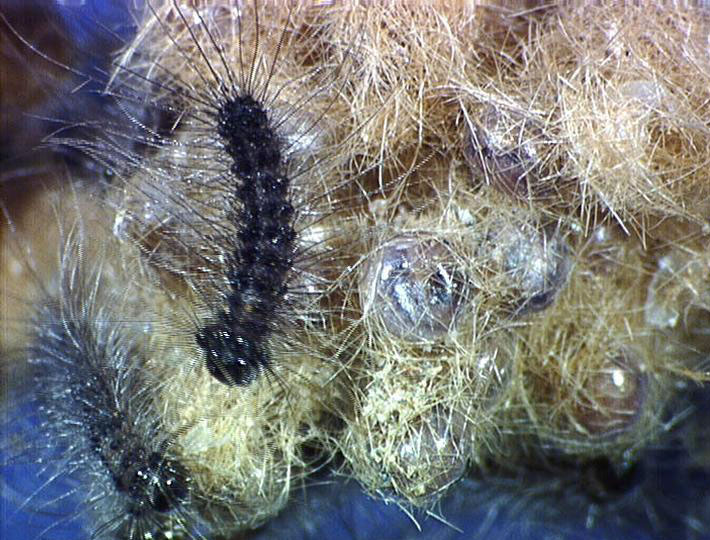
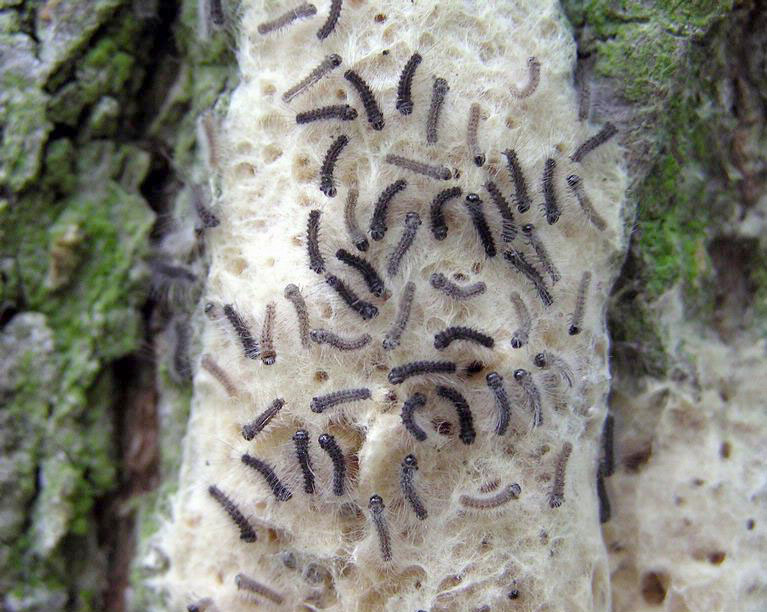
After hatching, the larvae (caterpillars) leave the egg mass and climb up and out to the end of a branch or shoot, then drop down on a silk strand. Larvae dangle in the air and wait to be blown by the wind, a process called ballooning. These tiny larvae, which are less than 0.25 inches in length, have long hairs on their bodies that make them buoyant and help them disperse in the wind.
If the larvae land on a suitable host, they begin feeding. If not, the larvae will climb up and go through their dispersal behavior again. Most larvae end up feeding on trees less than 100 to 150 yards from where they hatched. Studies have shown, however, that the young larvae can be carried in the wind as far as a half-mile from the egg mass where they hatched.

Each spongy moth larva will feed on tree foliage for six to eight weeks. Like other caterpillars, spongy moth larvae pass through several stages called instars as they feed and grow. For example, after hatching, the first instar larvae feed for approximately a week then molt, shedding the outer layer of their exoskeleton and becoming second instars. The second instars feed for another five to eight days, then molt and become third instars, and so on.
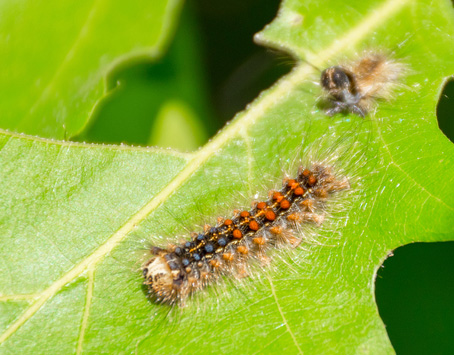
Spongy moth males complete five instars and females, who need extra energy to produce eggs, complete six instars. While first instar larvae are black, the distinct red and blue dots become apparent when larvae are second or third instars. By the time the larvae complete their feeding, male caterpillars can be 1.5 to 2 inches long and female caterpillars can be 2.5 to 3 inches long.
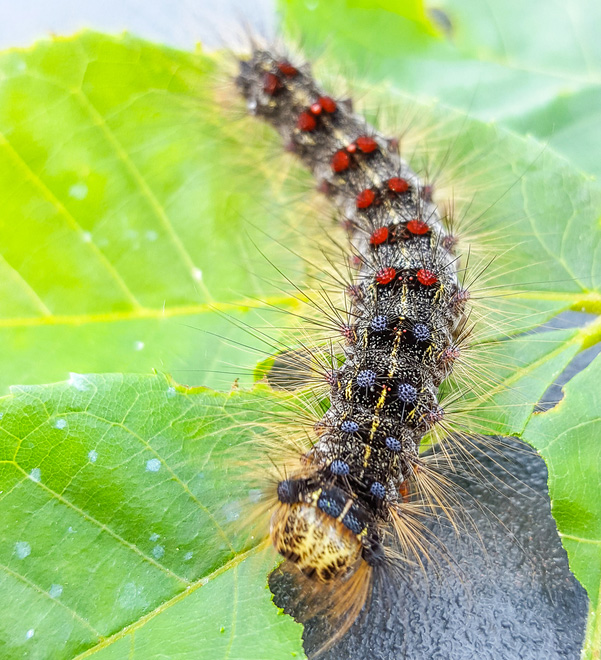
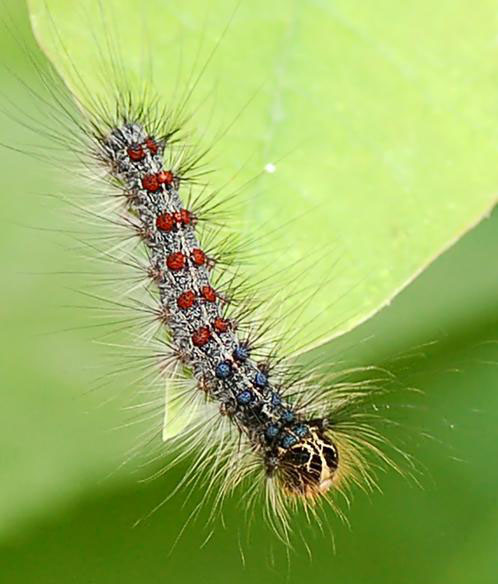
Young spongy moth larvae (first through third instars) feed mostly during the day. Older larvae (fourth through sixth instars) usually feed at night, then move down the tree to hide in bark crevices, leaf litter or other dark, protected locations during the day.
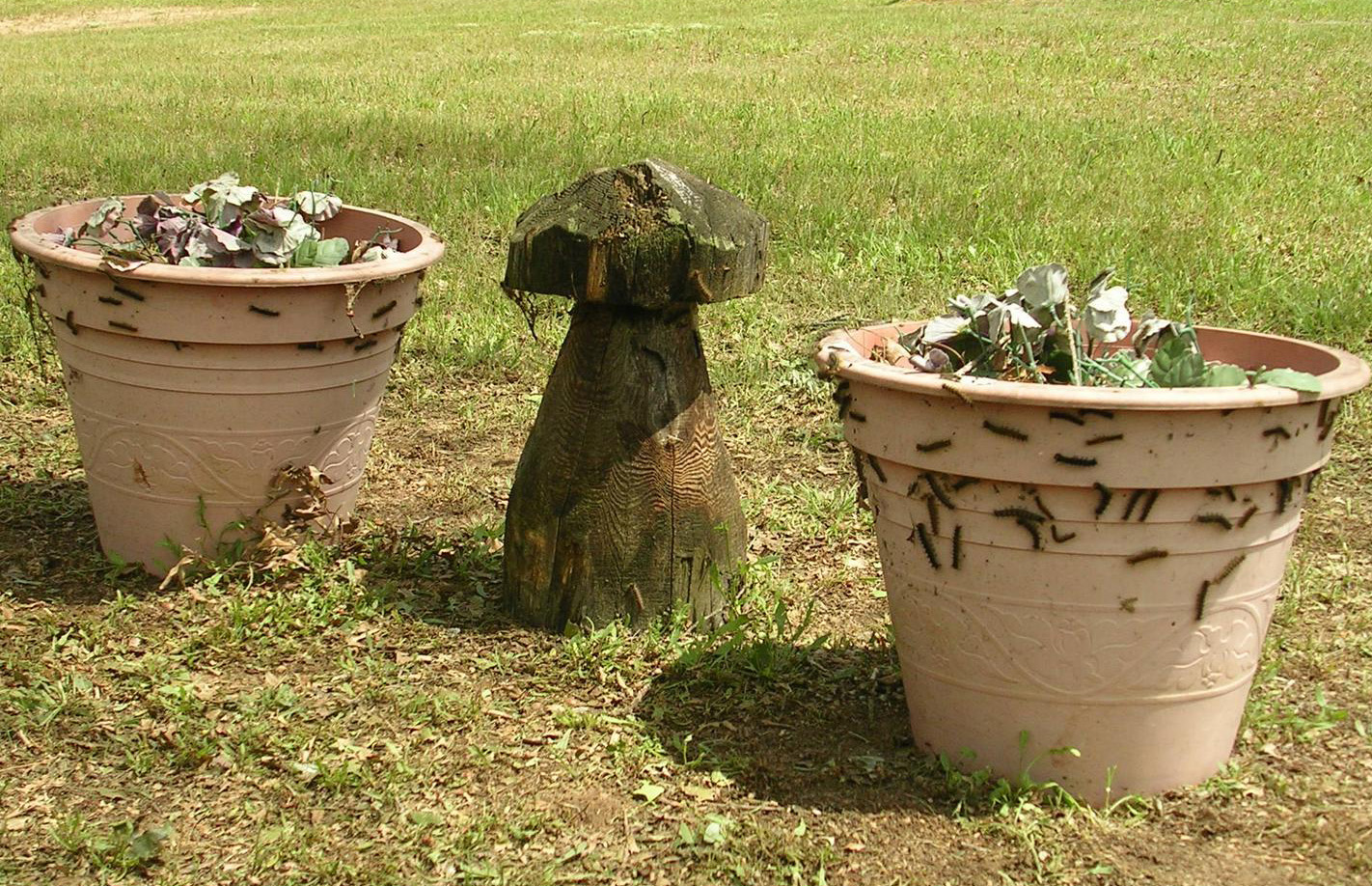
Feeding by young larvae results in small holes in the leaves while third and fourth instars consume small patches of leaf tissue between the veins. As larvae grow, they are able to consume more of the leaf tissue. Large caterpillars will eventually consume entire leaves, leaving only the thickest veins behind. Eighty to 90% of the defoliation is caused by the large fifth and sixth instar larvae.
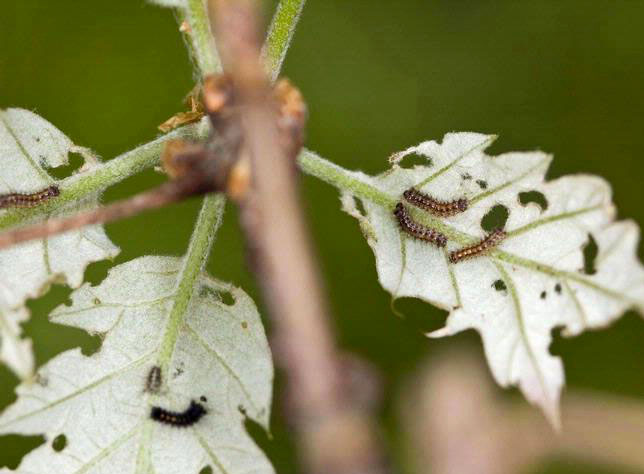
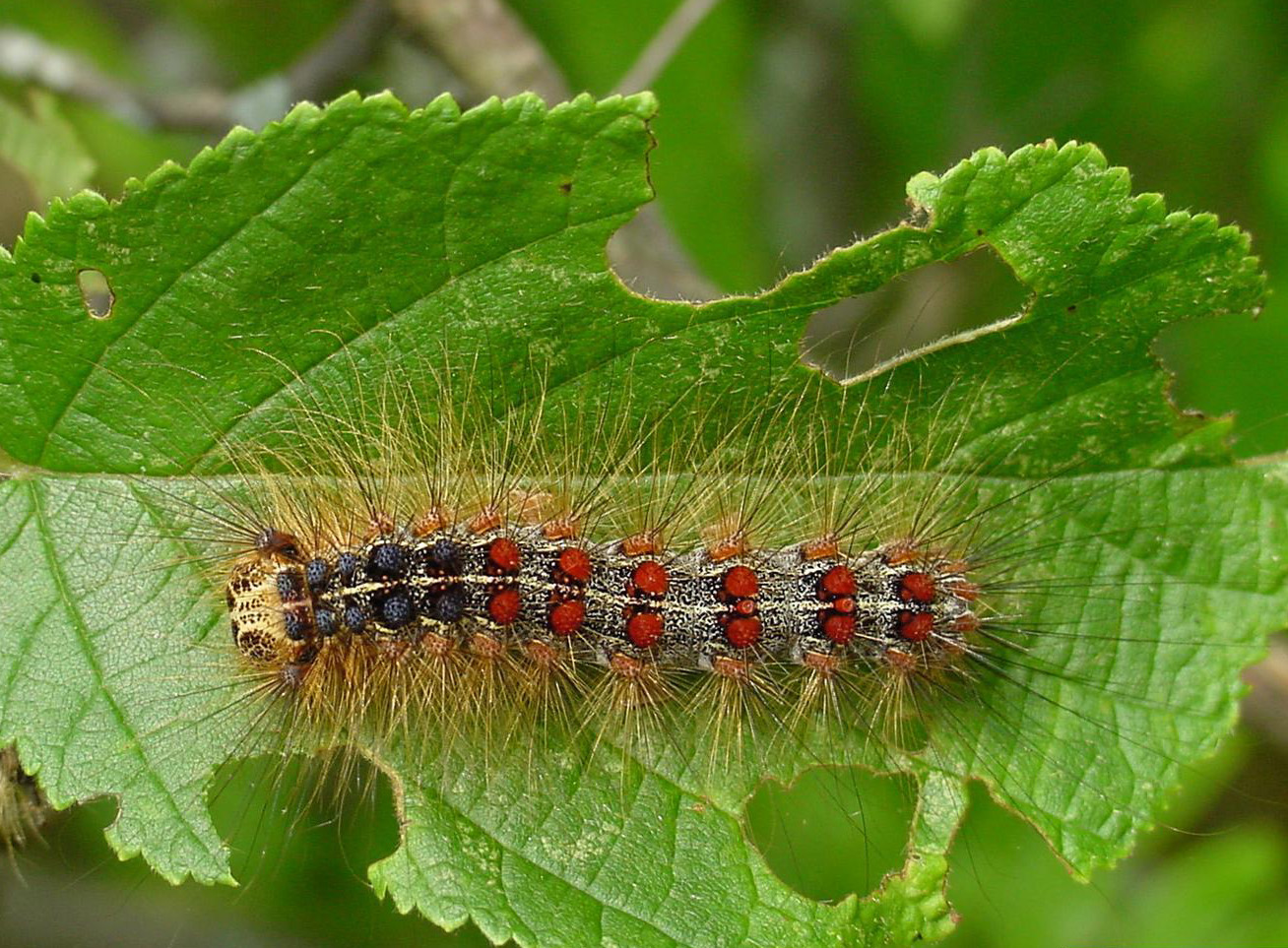
Spongy moth larvae can feed and develop on more than 300 species of trees and woody shrubs. Oaks are their favorite host trees but aspen, apple and crabapple, basswood (linden), birch and willow trees are also highly suitable hosts. As the larvae grow, their list of host trees expands, sometimes including conifers such as white pine or spruces. A few tree species, including red maple and ash, are not suitable hosts for spongy moth and typically sustain little or no defoliation, even during outbreaks.
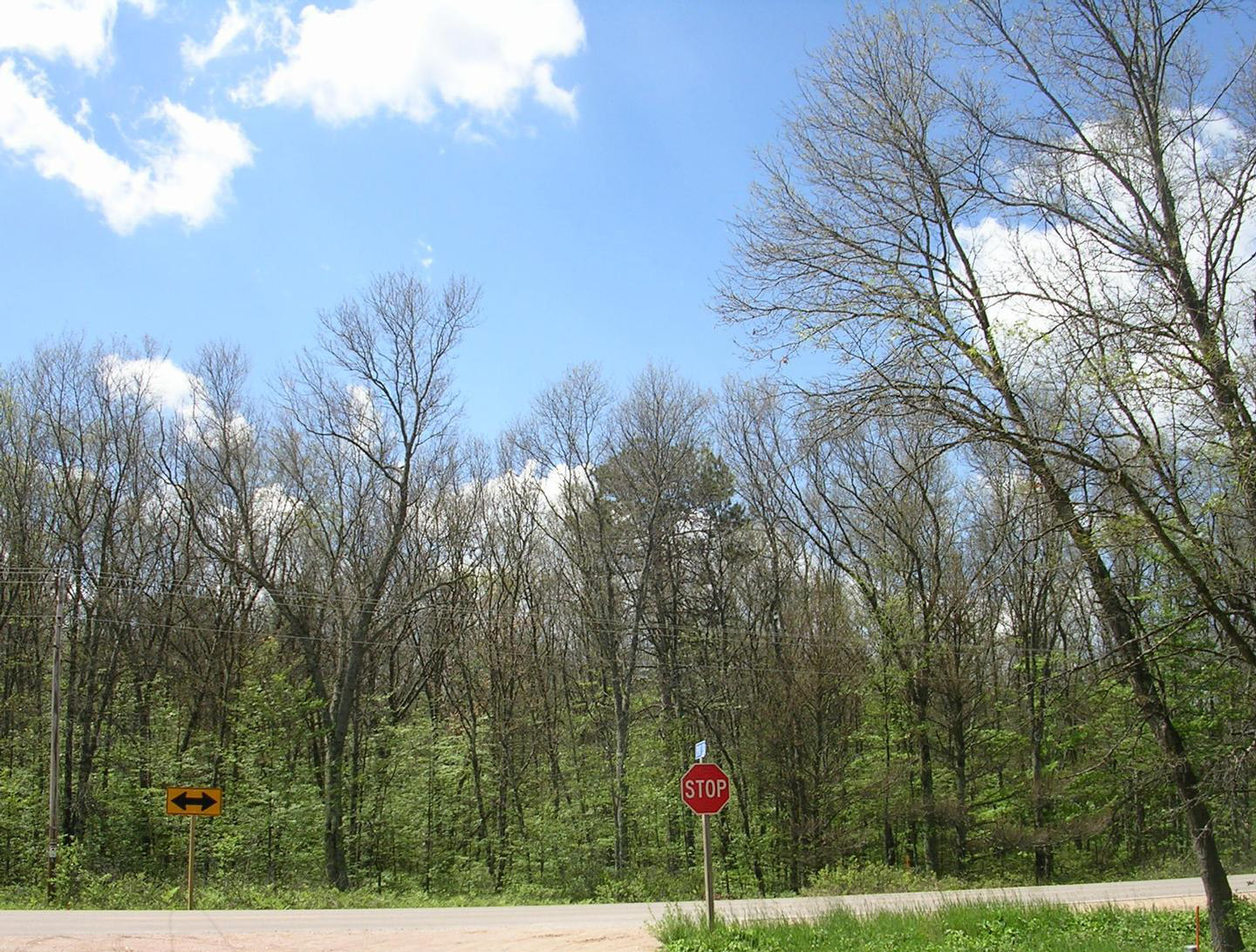

Once larvae finish feeding, they often move about looking for a protected location where they can spin a cocoon and pupate. Spongy moth cocoons are often found in crevices of thick bark or on the underside of branches, but can also be present on outdoor items such as picnic tables, dog houses, planters and vehicle wheel wells or bumpers. The pupation stage lasts approximately 10 to 14 days. During this period, the caterpillars transform into adult moths and emerge from the cocoon.
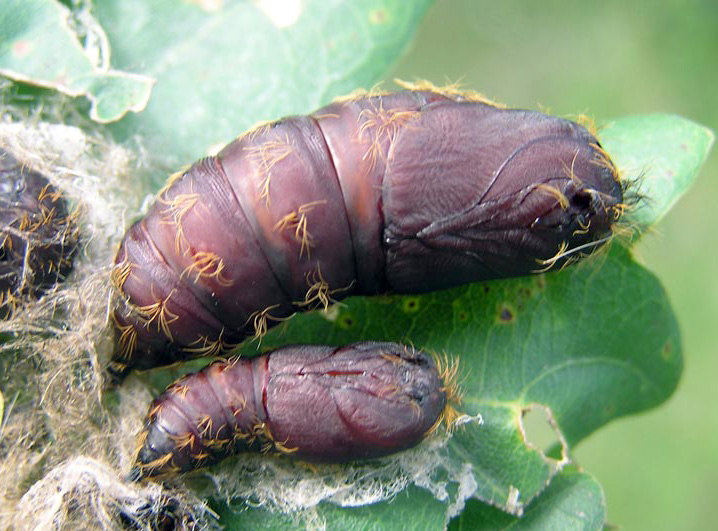
In Michigan, adult spongy moth are usually present from mid- or late June through mid- or late July, depending on location and weather. Adult spongy moth do not feed and while spongy moth may be present for two to three weeks in a local area, individual moths live only a few days. Female moths are white with black markings. Despite their large wings, female spongy moth cannot fly. They produce a powerful pheromone that attracts the male moths for mating. Male moths are dark brown or grayish with dark markings on their wings. They often fly in a zig-zag pattern, which helps them track the pheromone and locate female moths.
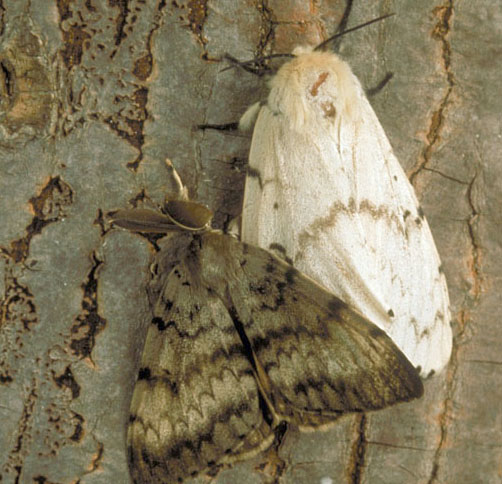
After mating, each female moth lays a single egg mass. Egg masses are tan and covered with a dense mat of fine hairs from the body of the female moth. A small egg mass is about the size of quarter and usually contains 200-250 eggs. A relatively large egg mass may be 2 to 3 inches long and can have more than 1,000 eggs.
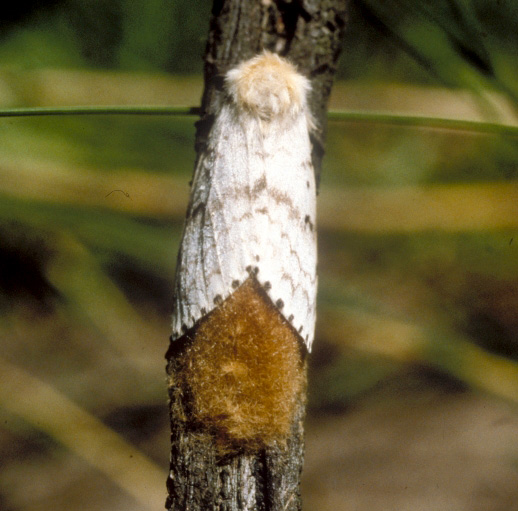
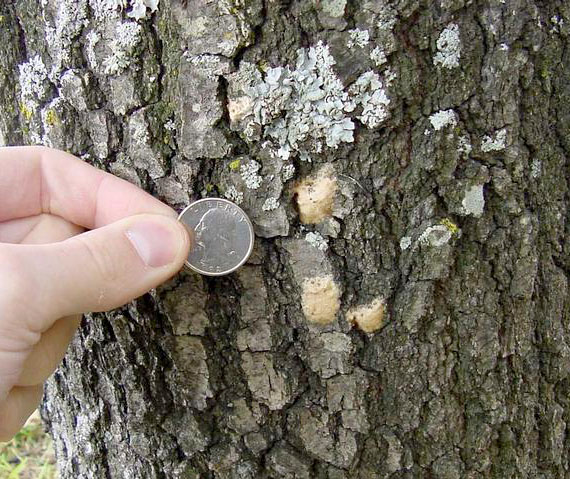
Egg masses are laid near the spot where the female pupated and are usually found on tree trunks or branches.

Egg masses can also be laid on many other outdoor items including firewood, lawn furniture and in wheel wells or under the bumper of vehicles. Transporting even a single egg mass to an area where spongy moth is not established can start a new spongy moth infestation. Because of the risk posed by egg masses, a federal quarantine in the United States regulates movement of nursery trees, Christmas trees, logs and related items from infested to uninfested states where spongy moth is not established.



 Print
Print Email
Email



